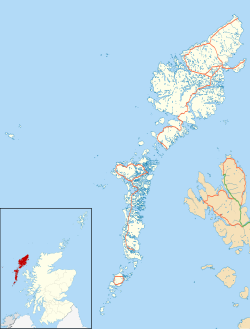Cnoc Ceann a' Gharaidh | |
 Callanish II seen from the west | |
| Location | Lewis |
|---|---|
| Coordinates | 58°11′40″N6°43′44″W / 58.19444°N 6.72888°W |
| Type | Stone circle |
| History | |
| Material | Stone |
| Founded | c. 2750 BC [1] |
| Periods | Neolithic, Bronze Age |
The Callanish II stone circle (Scottish Gaelic : Cnoc Ceann a' Gharaidh [2] ) is one of many megalithic structures around the better-known (and larger) Calanais I on the west coast of the Isle of Lewis, in the Outer Hebrides, Scotland.
